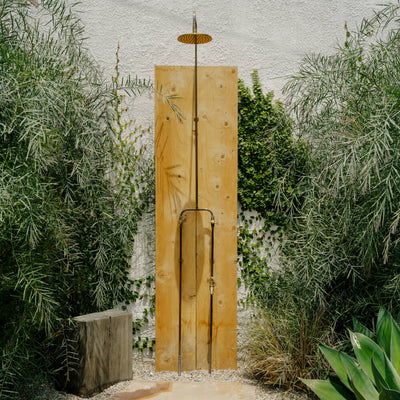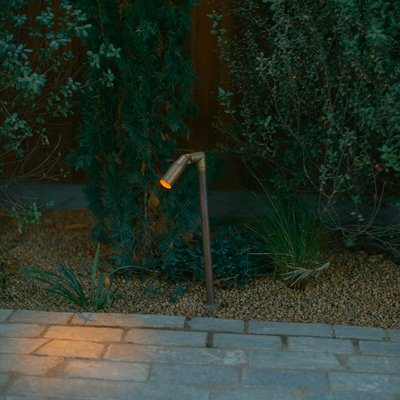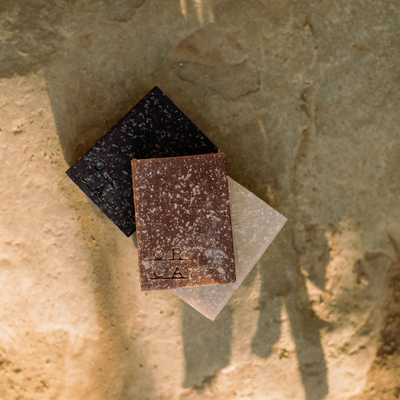PLANTS +
PEOPLE
A study of the symbiotic relationship between
humans and the gardens they tend to.
At OR.CA, our work begins by understanding that it doesn’t end — a landscape is an ongoing dialogue, shaped by seasons and in response to our environments. Plants + People is an ongoing exploration of what it looks like to plant roots, to honor cycles, to inhabit space, and to accept impermanence through the perspectives of individuals we admire.

schentell nunn
006 schentell nunn
photography: justin chung

For Los Angeles florist Schentell Nunn, translating gestures of beauty through nature have been a lifelong through line. Growing up, she spent summers exploring the Vermont woods and getting lost in her grandmother’s Bay Area rose garden, following her young curiosities by weaving velvety petals and fallen backyard branches into elaborate wearable crowns and pieces of art. This pairing of reverence and inspiration has continued, forming the ethos of Offerings, her business where she creates everything from hand-tied seasonal bouquets to grand botanical installations. To discover more, we visited Schentell in her studio in Mid-City, Los Angeles, for a conversation on favorite blooms, the gifts that come from farmers’ market sourcing, and the intuitive language of flowers.
“I do most of my sourcing from the LA flower market. It is incredible how much is grown locally, and I love that the majority of the market is made of small family-owned POC businesses. It’s a wonderful feeling to know the father and son of a business, to have an ongoing friendship with them, and to know you are directly supporting their wellbeing and growth as a family.”
Schentell Nunn
What is your first or earliest memory of being in a garden?
When I was a child my grandmother had a beautiful garden at her Bay Area home. I must have been 5 or 6 when I first realized how magical her home was: she loved roses and crammed as many plants as she could possibly fit in her suburban yard. I remember being amazed by the endless amount of growth in that space, like the room dedicated to African violets with hundreds placed around.
Where did your gardening sensibility/connection to plants come from?
My childhood was heavily spent outdoors, exploring and playing and building anything we could find. Nature has always been fascinating to me. Around nine years old my family moved to Vermont and my brothers and I would spend hours running through the woods. I just remember being blown away seeing the flowers that grew in the meadows. It always felt so natural to be there.
What are some indicators or ways your plants and flowers communicate to you that it needs something? What are the ways you respond to your garden/ your flowers?
This is a really interesting question that I have never really spoken about. Oddly enough I always feel I can tell when a plant in my home needs care based on intuition; a simple awareness of how “alive” a flower or plant is. I don’t know if this is common or not, but I’ve always considered it a special gift to be able to feel the level of life that is in a growing element.

“I always feel I can tell when a plant in my home needs care based on intuition…I’ve always considered it a special gift to be able to feel the level of life that is in a growing element.”
Schentell Nunn
What plants remind you of your childhood?
In the studio I really love to bring in flowers that feel like they were once wild in some way. I love textures and depth, and I am always looking to work with those varieties the most. At home I seek out plants that have a dance or a variegation that feel special to the eye. In both spaces I really aim to always be surrounded by elements that feel elegant, and intentional. The blooms that remind me of my childhood the most are always garden roses and fall branches.
What are some of your favorite plants you get to work with seasonally?
Every season brings such beautiful flowers. We are really lucky to have such an incredible variety at the LA flower market. In the winter and spring I love the endless sweet peas and spirea. In early summer the incredible smokebush and corn cockle is hard to not pine for. I am currently awaiting rosehip season — one of my growers gets it in the fall from Oregon with this beautiful gray toned foliage and deep orange berries. Honestly the list goes on.

Salpiglossis sinuata
(Painted Tongue)
An upright annual with attractive, trumpet-shaped blooms that come in a range of colors. Native to South America, this plant prefers cooler climates and does best in areas with cool summer temperatures. It is a lovely addition to a cutting garden for bouquets. Deadhead spent flowers to encourage additional blooms. Plant in full sun to part shade.

We love that you source locally from the farmers market. What flowers and herbs do you use for cooking or for other medicinal purposes?
I do most of my sourcing from the LA flower market. It is incredible how much is grown locally, and I love that the majority of the market is made of small family-owned POC businesses. It’s a wonderful feeling to know the father and son of a business, to have an ongoing friendship with them, and to know you are directly supporting their wellbeing and growth as a family.
In my home life I consistently find my way back to herbs like nettles and lemon balm. They are both beautiful and gentle medicines. I recently was informed to start working with Vitex, which I also love as a cut bloom in my work. I have a deep respect for herbal medicine and the beautiful effects it has on the human body.
Do you have any garden traditions that you’ve inherited or learned and plan to pass on?
When I have an exterior garden I plan to plant some of my favorite garden rose varieties in a portion of the garden. In some way it's an homage to my grandmother. It’s also a dream to have a cutting garden that I can frequent for fresh and textural blooms.

Lunaria
(Silver Dollar)
These are biennials so their flowers come in the spring of their second year. Blooms are purple and when they turn to seed pods, they start green and once fully dried become an off-white with a sheen. The seed pods are lovely in dried floral arrangements and wreaths. Plant in full sun to part shade.



Do you recommend any book for those beginning in cut flowers or at home gardeners growing flowers?
I strongly believe in learning through community, and supporting individuals on a personal level when you can. That said, if you are seeking knowledge in a particular medium, definitely seek out people who are offering online classes and workshops so that you can obtain the knowledge you desire. Unfortunately, so much copying under the guise of “being inspired” has become a huge downfall of the online media world. However, if you can find people who are truly teaching and you have the means to compensate for their knowledge it can be a wonderful resource.
Dahlia spp.
(Dahlia)
This perennial tuber is easy to grow and comes in a range of colors and shapes. Pinch to encourage branching and more flower production for this late season bloomer. As it grows taller, use a tomato cage or stake to keep the plant upright. Plant in full sun and well-draining soil.

“In the studio I really love to bring in flowers that feel like they were once wild in some way. I love textures and depth, and…I seek out plants that have a dance or a variegation that feel special to the eye.”
Schentell Nunn

Echinops ritro
(Globe/Blue Thistle)
A durable perennial with dark green foliage and deep violet-blue flowers. Its golf ball shaped blooms are excellent in fresh or dried arrangements. This plant is drought tolerant and great in a perennial border or in a cutting garden. It attracts bees and butterflies. Plant in full sun and well-draining soil.










